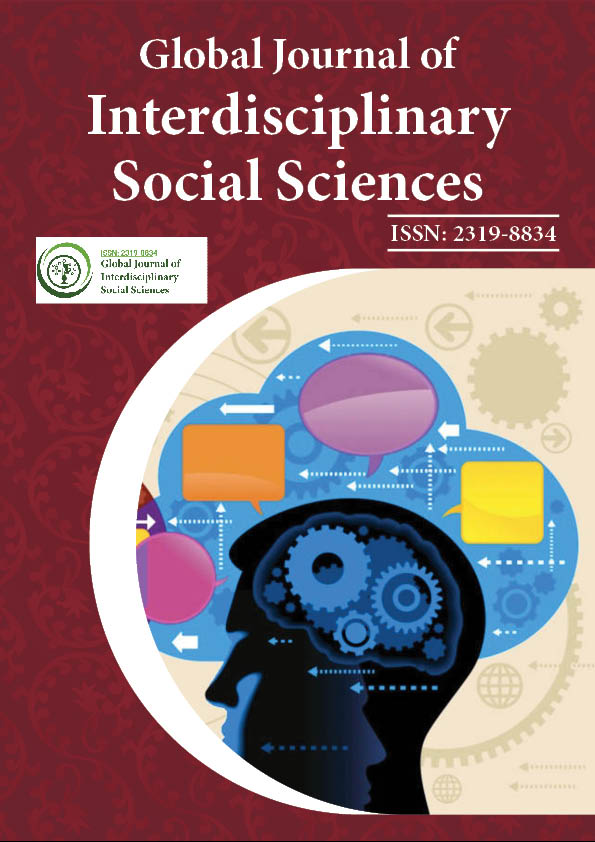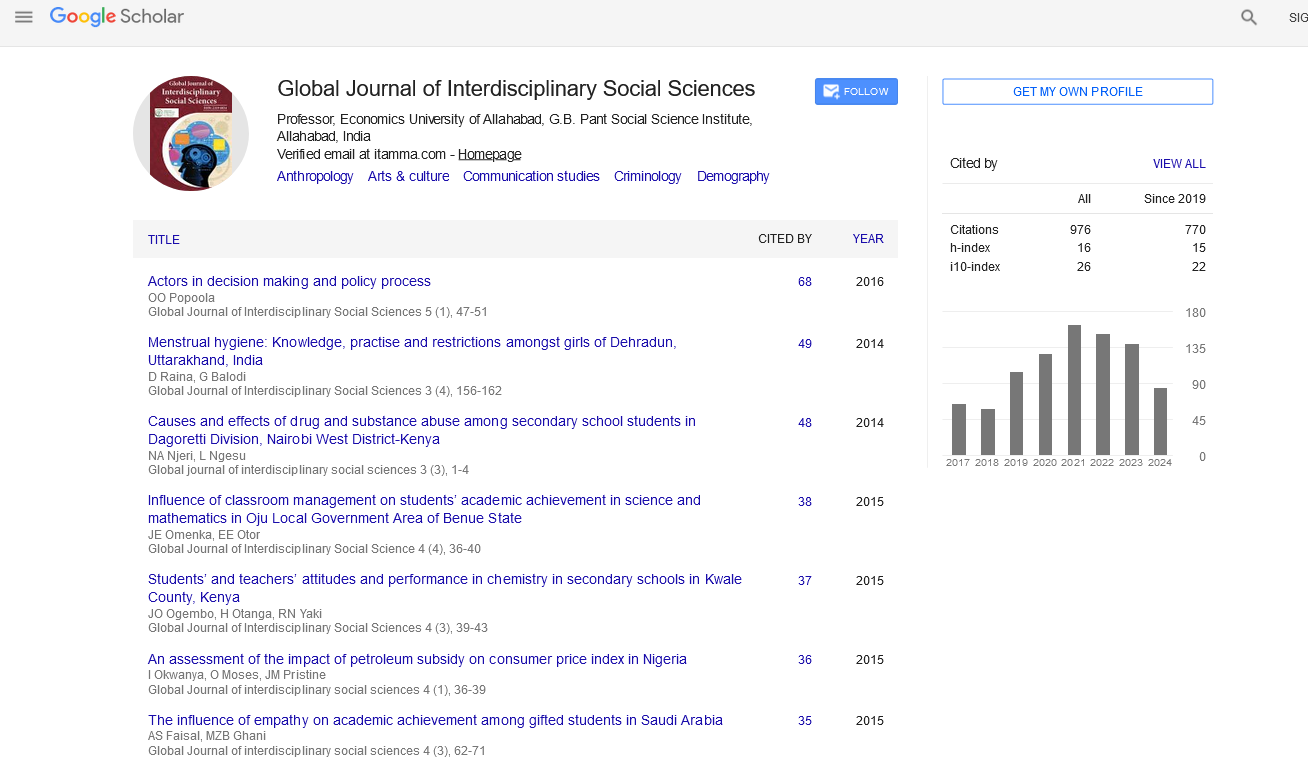Indexed In
- JournalTOCs
- Google Scholar
Useful Links
Share This Page
Journal Flyer

Open Access Journals
- Agri and Aquaculture
- Biochemistry
- Bioinformatics & Systems Biology
- Business & Management
- Chemistry
- Clinical Sciences
- Engineering
- Food & Nutrition
- General Science
- Genetics & Molecular Biology
- Immunology & Microbiology
- Medical Sciences
- Neuroscience & Psychology
- Nursing & Health Care
- Pharmaceutical Sciences
Commentary - (2024) Volume 13, Issue 1
The Evolution of Educational Systems in Japan: Historical Context and Key Contributions
Lucas Evans*Received: 28-Feb-2024, Manuscript No. GJISS-24-27878; Editor assigned: 01-Mar-2024, Pre QC No. GJISS-24-27878 (PQ); Reviewed: 15-Mar-2024, QC No. GJISS-24-27878; Revised: 22-Mar-2024, Manuscript No. GJISS-24-27878 (R); Published: 29-Mar-2024, DOI: 10.35248/2319-8834.24.13.081
Description
The Japanese educational system, often regarded as one of the most effective in the world, has undergone significant transformations influenced by historical developments, cultural values and key figures. This essay provides a comprehensive overview of the evolution of education in Japan, examining both the positive and negative aspects of the system. By contextualizing these changes within their historical framework, a clearer understanding of the current educational landscape emerges.
Japan's educational system can trace its roots back to the 6th century when Buddhism and Confucianism introduced formal education. Initially, education was exclusive to the elite, focusing on moral and ethical teachings, as well as Chinese classics. The Meiji Restoration of 1868 marked a significant moment in Japanese education. As Japan sought to modernize and compete with Western powers, the government implemented a series of reforms to establish a more structured and accessible educational framework. In 1872, the Basic act on education was enacted, promoting universal education and establishing a system that included elementary, secondary and higher education.
During the early 20th century, Japan adopted a centralized education system heavily influenced by Western ideals. This shift resulted in the introduction of new course frameworks, pedagogical strategies and educational philosophies. However, the militaristic ideology that permeated the state during the 1930s and 1940s led to an education system focused on nationalism and loyalty to the emperor. Post-World War II reforms, influenced by the Allied Occupation, dismantled the pre-war educational structures, promoting democratic principles, critical thinking and creativity.
Several influential figures have played important roles in forming Japanese education. One prominent figure is Tsunesaburo Makiguchi, an educator and philosopher who founded the Soka Gakkai movement in the early 20th century. Makiguchi emphasized the importance of student-centered learning and the cultivation of values such as creativity and compassion within education. His ideas laid the groundwork for progressive educational reforms in Japan.
While these reformers championed positive changes, the education system has faced criticisms. The focus on rote memorization and standardized testing has often been highlighted as a drawback. The competitive nature of entrance examinations for high schools and universities can place significant stress on students. Critics argue that this environment stifles creativity and individuality, leading to an emphasis on conformity over innovation. Positive aspects of the Japanese education system.
The Japanese education system boasts several positive aspects that contribute to its international standing. One noteworthy characteristic is the strong foundation in mathematics and science, resulting in high student performance in international assessments, such as PISA. This success is attributed to a well structured and rigorous curriculum, coupled with the emphasis on academic achievement from an early age.
Furthermore, the cultural value placed on education in Japan encourages a strong sense of discipline, respect and community within schools. Student responsibilities, such as cleaning classrooms and participating in school events, promote teamwork and a sense of belonging. The Japanese concept of "gakushu," which means "learning through experience," encourages students to engage actively in their education, enhancing their critical thinking and problem-solving skills. The rigid educational structure stymies creativity and can lead to disengagement among students. The heavy reliance on standardized testing may detract the development of innovative skills, which are increasingly important in a rapidly changing global environment. Critics argue that the education system should evolve to emphasize critical thinking and adaptability rather than rote memorization.
In conclusion, the Japanese education system has a rich historical context formed by influential figures and significant reforms. While it remains widely regarded as effective, it must address the challenges of conformity and the need for a curriculum that encourages creativity and critical thinking. As Japan continues to evolve in a global society, its educational institutions will need to balance tradition with innovation to prepare students for a rapidly changing world. The ongoing dialogue regarding educational practices in Japan is critical toward forming an equitable, inclusive and innovative future for its students.
Citation: Evans L (2024). The Evolution of Educational Systems in Japan: Historical Context and Key Contributions. Global J Interdiscipl Soc Sci. 13:081.
Copyright: © 2024 Evans L. This is an open access article distributed under the terms of the Creative Commons Attribution License, which permits unrestricted use, distribution, and reproduction in any medium, provided the original author and source are credited.

